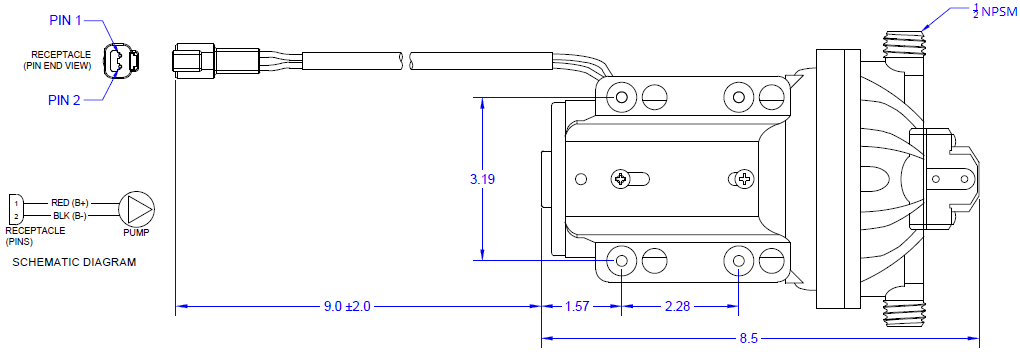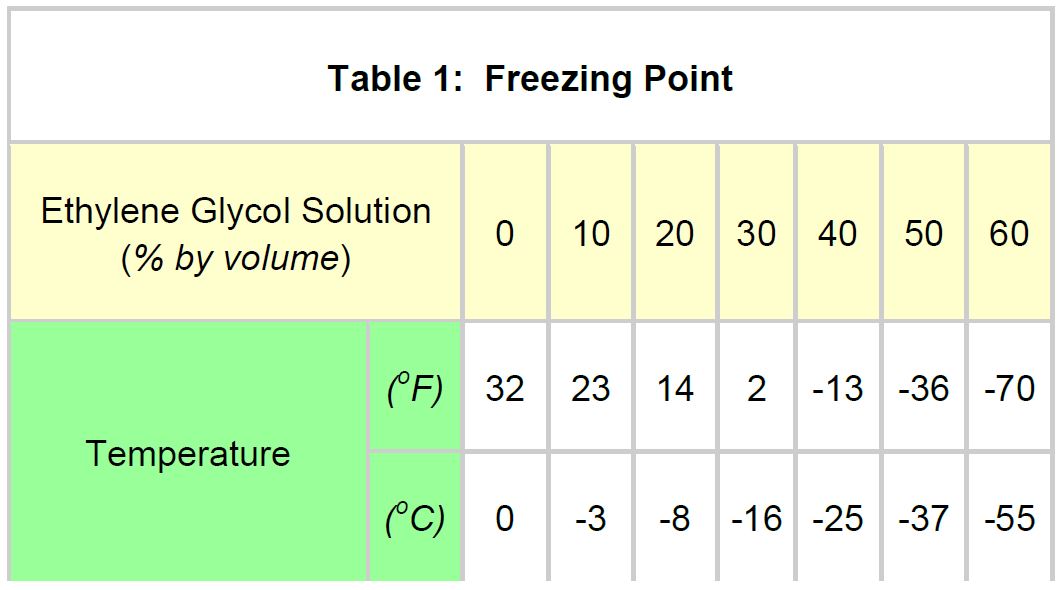Seakeeper 2 Installation Manual (90488-4); S/N 2-232-1564 to Current
4.0 Cooling Installation
4.1 Cooling Installation Introduction
Reference Documents & Drawings
- 90469 – Seakeeper 2 Hardware Scope of Supply
- 90490 – Seakeeper 2 Cooling Water Schematic
- 90470 – Seakeeper 2 Cable Block Diagram
The Seakeeper 2 is shipped with the cooling circuit filled and ready for use. The Seakeeper 2 requires connection to a raw water pump, referred to as the seawater pump, to cool the closed loop cooling circuit on the unit. The required seawater flow through the Seakeeper 2 heat exchanger is between 2 – 6 GPM (7.6 – 22.7 LPM) when the on-demand cooling system requires cooling. Prior to operation, confirmation of glycol level is recommended.
Seakeeper offers a compatible self-priming DC Seawater Pump (P/N 30331) prewired for the Seakeeper 2 Installation and covered under the standard Seakeeper warranty. The pump conforms to the seawater plumbing best practices noted in TB-90947. See Drawing No. 30331, SeaFlo® Seawater Pump Assembly, and the Seakeeper Options and Accessories Price List for details.

4.2 Installation Considerations
- The installer is responsible for supplying a dedicated positive-displacement seawater pump (or electric isolation valve and centrifugal pump) and associated plumbing. An optional seawater pump can be purchased through Seakeeper, P/N 30331.
- Unintended seawater flow from the seawater pick-up during the vessel’s underway operation is unacceptable and may cause stress to internal components. Unintended flow should be mitigated through pump selection, using a diaphragm-style pump or an inlet control valve. Continuous cooling flow from shared through-hull plumbing, a centralized chiller, or a cooling system is unacceptable for on-demand Seakeeper models.
- Seawater connections on the Seakeeper heat exchanger mate with ¾ in. (19 mm) hose.
- The Electrical Installation Section outlines that the seawater pump is powered via the “SW Pump 12 VDC Out” connection on the Seakeeper 2 wire harness.
- The seawater pump operates on 12 VDC with a max overcurrent protection rating of 15 A.
- A dedicated through-hull fitting should be installed for each Seakeeper to ensure sufficient seawater flow to that unit onboard the vessel.
- It is recommended that the seawater pump is located below the waterline, as close to the vessel’s baseline as practically possible, to maintain positive inlet pressure on the pump in all operating conditions.
- A self-priming seawater pump may be required to maintain water flow in all underway conditions. Cavitation can occur at the seawater inlet and potentially cause an air-lock condition restricting seawater flow to the heat exchanger.
- The maximum allowed seawater pressure in the heat exchanger is 20 psi (1.4 bar).
- The seawater flow requirement through the heat exchanger is 2 GPM (7.6 LPM) minimum and 6 GPM (22.7 LPM) maximum when on-demand cooling is required. When sizing the seawater pump, the installer should factor in losses for raw water plumbing. In addition to initial operation at the dock, new Seakeeper installations should be checked to be within the flow requirements while the vessel is at speed. Flows higher than 6 GPM (22.7 LPM) could affect the heat exchanger’s life.
4.3 Connecting Seawater to Heat Exchanger
Refer to Figure 25 for typical seawater plumbing arrangement.
- Connect seawater pump to Seakeeper dedicated through-hull fitting. A strainer and seacock valve should generally be installed between the seawater inlet and the pump.
- Connect seawater from the installer-supplied pump to the lower 3/4 in. (19 mm) hose barb on the heat exchanger. Use the same practices as for other below-waterline seawater plumbing.
- Connect seawater discharge to the overboard drain. Use the same practices as other seawater plumbing below the waterline.
- The required flow rate is 2 GPM (7.6 LPM) minimum and 6 GPM (22.7 LPM) maximum.
- In addition to initial operation at the dock, new Seakeeper installations should be checked for a minimum 2 GPM (7.6 LPM) flow while the vessel is at speed and when backing down.
- If no other method of confirming flow is available, the discharge line may be temporarily diverted to a bucket. Flow is calculated from time to fill a known volume.
- Flowrates in excess of 6 GPM (22.7 LPM) could affect heat exchanger life.
- Inspect raw water plumbing during sea trial for any signs of leakage.

4.4 Seakeeper Optional DC Seawater Pump
- Seakeeper offers a self-priming DC Seawater pump as an optional addition, P/N 30331 – DC Seawater Pump Assembly, shown in Figure 26.
- The Seakeeper Seawater Pump is a 24 VDC pump operated at 12 VDC for the Seakeeper 2 and maintains a seawater flow of approximately 2.5 GPM (9.5 LPM) at 12 VDC.
- The pump assembly is pre-wired for connection to the Seakeeper 2 and includes a seawater strainer and various fittings. The pump specifications are as follows:
NOTE: Use only SeaFlo®-provided threaded fittings for DC Seawater Pump 30331.
| Volts | 24 VDC (intended for 12 VDC operation with Seakeeper 2) |
| Flowrate | 2.5 GPM (9.5 LPM), at 12 VDC |
| Overcurrent Protection Rating | 15 A |
| Ignition Protection Rating | ISO 8846 or equivalent |

4.5 Adding Coolant
- The Seakeeper 2 cooling system is filled to proper level when shipped. If level has dropped, check for evidence of leaks at all connections before adding fluid as described below. If coolant is at the correct level, skip to Step 5.
- The minimum and maximum glycol fill levels are shown in Figure 27.

- Mix 50% ethylene glycol with 50% distilled water in a clean container. Refer to Table 1 or glycol manufacturer’s literature for freezing points.
- It is required that ethylene glycol with corrosion inhibitors be used. Most commercially available glycol has these additives standard.

- Remove reservoir cap and pour mixture in until level reaches top face of the reservoir enclosure, as shown in Figure 27.
- Filling reservoir above this level will not cause any damage but coolant may be expelled from the vented cap due to normal thermal expansion of coolant.
- Once the Seakeeper 2 and DC seawater pump are connected to 12 VDC power:
- Check the Seakeeper Display interface for any ALARMS.
- Cycle the Seakeeper 2 power, and press the POWER ON button.
- The flywheel will start to spin, and the glycol pump will start.
- Recheck glycol level with fluid circulating in coolant circuit to ensure the correct fill level is maintained.
- After several minutes of running, press POWER OFF button.
- The cooling system is self-purging. If small amounts of air are in the system, they should be dislodged during the first sea trial. Recheck level after sea trial and add fluid if required.
NOTE: It is not uncommon to see some air in the coolant system. It is normal and will not affect operation.